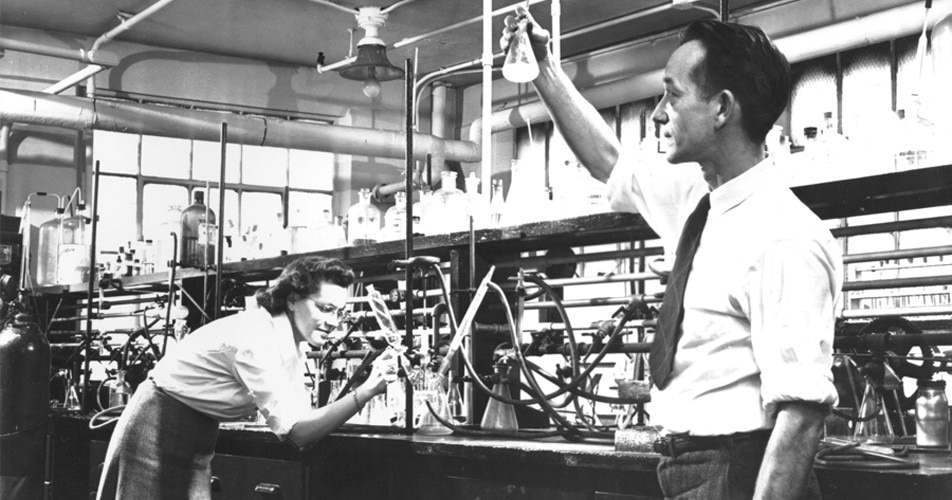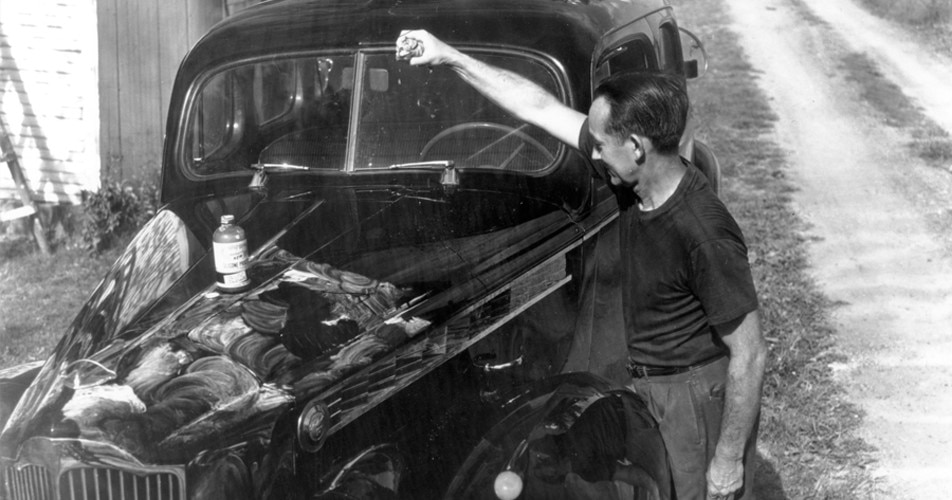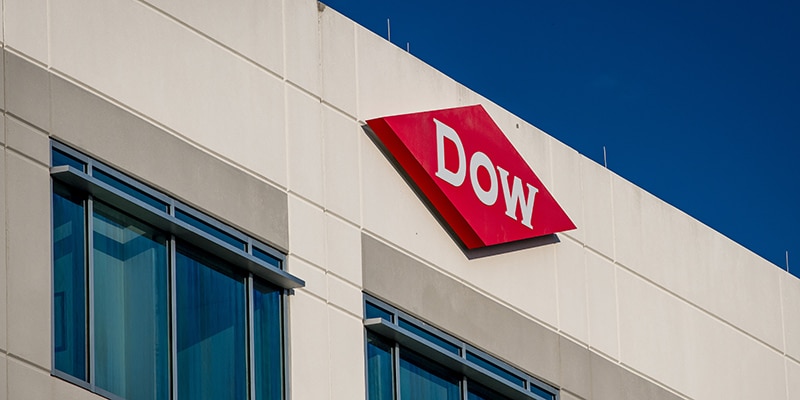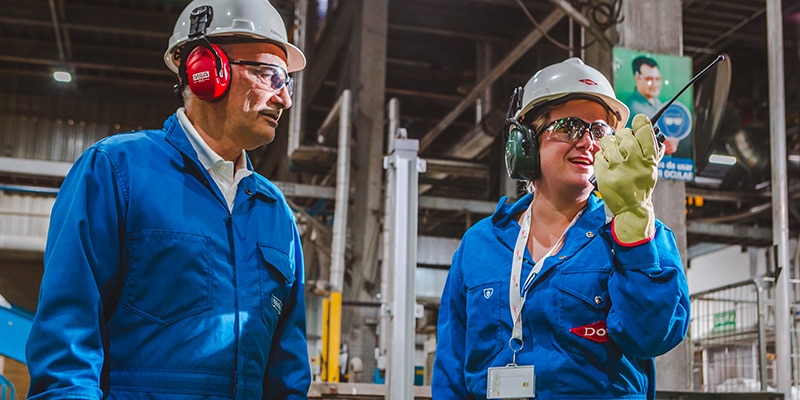Dr. James Franklin Hyde’s research combined the advantages of both glass and plastics, organic and inorganic chemistry, leading to the commercial production of silicones at Dow Corning Corporation and a long, distinguished career.
 Dr. Hyde’s earliest experiments brought about the first compounds that combined the basic components of glass and plastic. He is pictured here, in 1945, at a Corning Glass Works lab with a colleague. Dow Corning historic photo.
Dr. Hyde’s earliest experiments brought about the first compounds that combined the basic components of glass and plastic. He is pictured here, in 1945, at a Corning Glass Works lab with a colleague. Dow Corning historic photo.An Extraordinary Hire
In 1930, Dr. Eugene Sullivan, director of research at Corning Glass in Corning, New York, hypothesized that plastics may replace many of their glass counterparts. He hired Dr. Hyde, a young organic chemist, to develop a material that combined the best elements of inorganic glass and organic-based plastics. Even Dr. Hyde thought it audacious to hire an organic chemist at a company that produced inorganic glass. But the move paid off, as Dr. Hyde soon created organosilicon compounds that fulfilled Dr. Sullivan’s vision.
 Dr. Hyde (on right) with Dr. W.R. Collings in Hyde’s laboratory in 1966. Dr. Collings was one of Dow Corning’s early leaders and was the company’s president from 1954 to 1962. Dow Corning historic photo.
Dr. Hyde (on right) with Dr. W.R. Collings in Hyde’s laboratory in 1966. Dr. Collings was one of Dow Corning’s early leaders and was the company’s president from 1954 to 1962. Dow Corning historic photo.Uniting for Progress
It’s a WRAP
Work moved quickly for Dr. Hyde and Corning Glass Works in the 1930s. Hyde developed a flawless glass, fused silica, which would later be used in telescopes and telecommunications. Glass is silicon-based, making it temperature- and moisture-resistant, chemically inert, and dielectric. Plastics are carbon-based, making them strong and able to assume many forms. His team’s silicone resins also showed immediate potential for greases, lubricants and insulators.
In 1942, an agreement was formalized by a handshake, giving birth to an industry. Corning Glass and The Dow Chemical Company agreed to form a joint venture – Dow Corning Corporation – for the development and manufacture of silicones. Dow Corning 4 Compound was the first commercialized product that made high-altitude transatlantic flight possible and ushered in a new age of aviation. Dow became 100-percent owner of Dow Corning in 2016.
 Dr. Hyde dropping water on the hood of car newly waxed with Dow Corning Silicone Car Polish to demonstrate how the product repels water through “beading.” Dow Corning historic photo, 1949.
Dr. Hyde dropping water on the hood of car newly waxed with Dow Corning Silicone Car Polish to demonstrate how the product repels water through “beading.” Dow Corning historic photo, 1949.In His Element
As manager of Dow Corning’s Organic Chemistry Research Laboratory, and later as a senior research scientist, Dr. Hyde would help develop many innovations throughout the mid-20th century. Silicone would prove an amazing material – it was resistant to water, UV light, microbial growth and thermal conductivity, and was a strong, stable substance. It was used for rubbers, sealants, waxes, and other products in industries as varied as automobiles, construction, aerospace, cookware and pharmaceuticals.
 Dr. Hyde being presented the Perkin Medal by Dr. Shailer L. Bass at the Plaza Hotel in New York City in 1971. The award is one of the highest honors in chemistry, and is named for Sir William Henry Perkin, a British chemist who discovered the first synthetic organic dye when he was 18 years old. Dow Corning historic photo, 1971.
Dr. Hyde being presented the Perkin Medal by Dr. Shailer L. Bass at the Plaza Hotel in New York City in 1971. The award is one of the highest honors in chemistry, and is named for Sir William Henry Perkin, a British chemist who discovered the first synthetic organic dye when he was 18 years old. Dow Corning historic photo, 1971.Honored for His Contributions
Among Dr. Hyde’s many awards was the prestigious Perkin Medal, which he received in 1971. The award is presented annually by the Society of Chemical Industry for an “innovation in applied chemistry resulting in outstanding commercial development.” It was a great honor for a scientist who would finish his career with approximately 120 patents to his name. He would later be inducted into the National Inventors Hall of Fame.
An Active Retirement, a Lasting Legacy
Dr. Hyde retired in 1973, but remained a research consultant for Dow Corning Corporation. Three years into his retirement, he designed an alternative periodic table of the elements, which was published in the student magazine Chemistry in 1975. His legacy would continue through the J. Franklin Hyde Scholarship in Science Education.
Though he passed away in 1999 at the age of 96, Dr. Hyde remains a towering figure in chemistry. His work paved the way for the continuing innovation in silicones at Dow today, in areas like specialty plastics, infrastructure materials and coatings.





